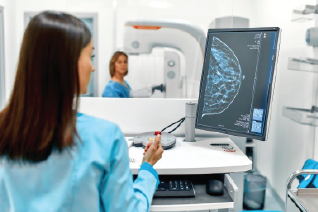The Significance of Early Detection: Beyond Mammograms

Early detection of breast cancer significantly increases the chances of successful treatment and survival. At Western Surgical Care, we recognize that mammograms are a cornerstone of breast cancer screening, but they are just one part of a comprehensive array of detection methods.
Western Surgical Care is committed to advancing breast cancer detection and enhancing patient education. Our facility, serving the Rocky Mountain region from Lone Tree, CO, offers a variety of diagnostic services. These services include clinical breast exams, self-examination tutorials, and advanced imaging technologies such as MRI and ultrasound, which are all crucial for early detection and improving treatment outcomes.
What Are Mammograms?
Mammograms are X-ray images of the breast that can detect tumors too small to be felt. They can also find microcalcifications (tiny deposits of calcium) that sometimes indicate the presence of breast cancer. As a key part of breast cancer screening, mammograms provide important information, although their effectiveness may vary. For women with dense breast tissue, additional methods alongside mammograms can enhance the detection process, ensuring a comprehensive approach.
Reasons for Getting a Mammogram
Mammograms can detect breast cancer early, possibly before it has spread. For many women, early detection means a better prognosis and more treatment options. Some reasons for getting a mammogram include detecting tumors that are too small to feel, screening if you’re at high risk for breast cancer, and as part of a regular health check-up after a certain age.
How Often Should You Get a Mammogram?
Guidelines on the frequency of mammograms can vary depending on age, family history, and risk factors. Generally, women aged 40 to 44 should start annual breast cancer screening if they wish to do so. Those aged 45 to 54 are recommended to get mammograms every year, while women 55 and older can switch to biennial screening or continue yearly screening.
Risk Factors for Breast Cancer
Understanding the risk factors for breast cancer is important in determining the necessity and frequency of screenings. Risk factors include age, genetic mutations, family history of breast cancer, personal history of breast cancer, dense breast tissue, and lifestyle factors such as alcohol consumption, obesity, and physical inactivity.
Early Detection Benefits
Early detection of breast cancer through screenings like mammograms can lead to earlier treatment, which can be less aggressive than treatments required for more advanced cancers. Early detection also significantly improves survival rates because it often catches cancer before it spreads.
Preventive Lifestyle Choices for Reducing the Risk of Breast Cancer
Lifestyle choices can influence the risk of developing breast cancer. Engaging in regular physical activity, maintaining a healthy weight, limiting alcohol intake, eating a diet rich in fruits and vegetables, and avoiding tobacco can help reduce the risk.
Other Methods for Breast Cancer Screening
Clinical Breast Exams
Clinical Breast Exams (CBEs) involve a thorough physical examination of the breasts and underarm areas for any signs of abnormalities or changes. Regular CBEs can identify lumps or changes that might not be detected by self-examinations alone. It’s recommended for women to have a CBE as part of their regular health check-ups, at least once every three years for those in their 20s and 30s, and annually for women 40 and over.
MRI
MRI is particularly effective for women with a high risk of breast cancer or dense breast tissue, where traditional mammograms might not be as effective. This imaging method uses magnetic fields and radio waves to create detailed pictures of the inside of the breasts, allowing for the identification of tumors that other screening methods might miss.
However, it’s important to note that an MRI is usually recommended to complement other screening methods, based on individual risk factors and medical history.
Ultrasound
Ultrasound uses sound waves to produce images of the breast tissue. It’s often used as a complementary tool to mammography, especially in cases where denser breast tissue makes it harder to detect abnormalities with mammograms alone. Ultrasound can help differentiate between solid masses, which could be cancerous, and fluid-filled cysts, which are usually benign.
Men and Breast Cancer
Breast cancer is not exclusive to women; men can also develop the disease, although at a much lower rate. Awareness among men, especially those with a family history of breast cancer or genetic predispositions, is vital for early detection and treatment.

